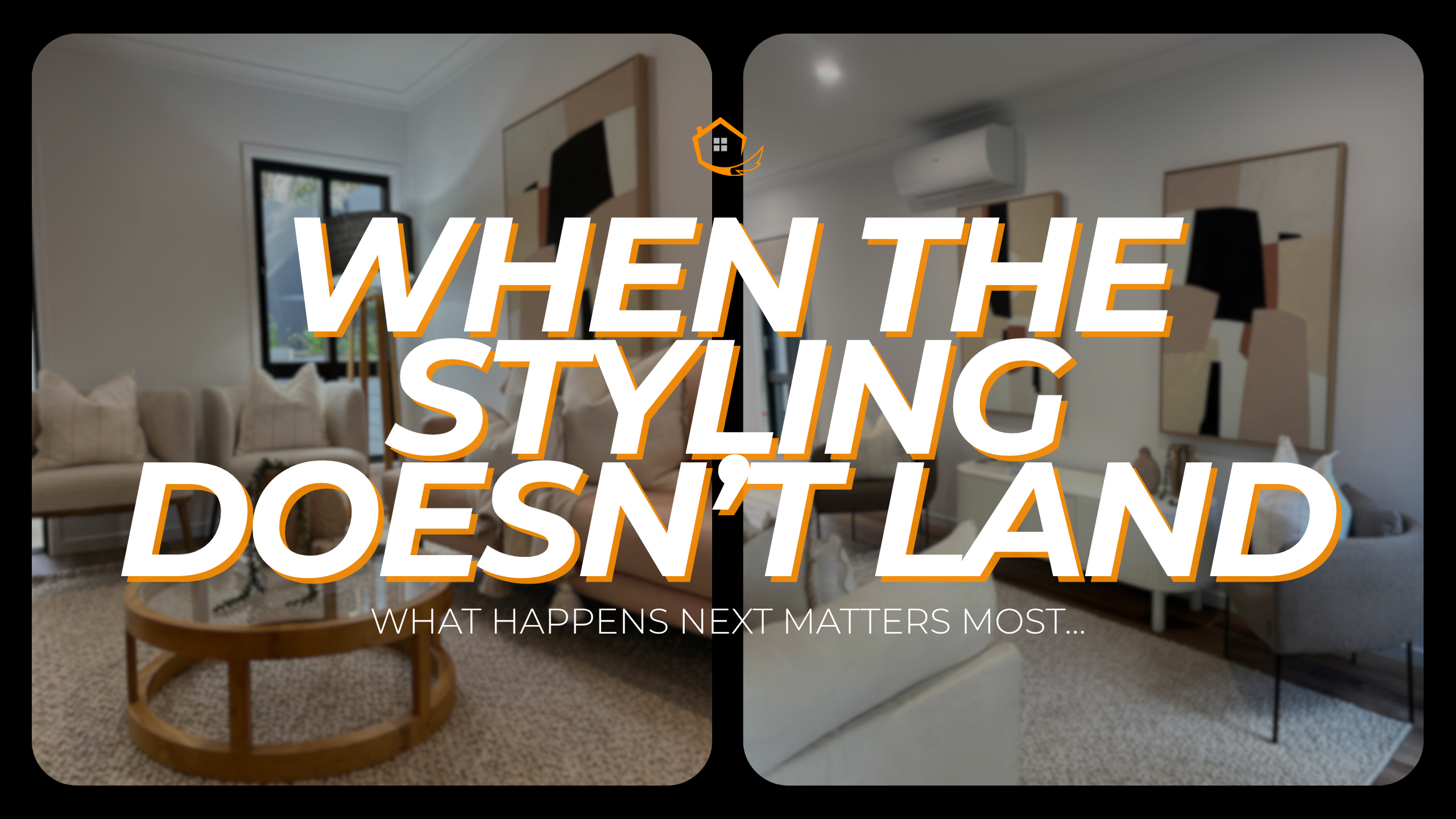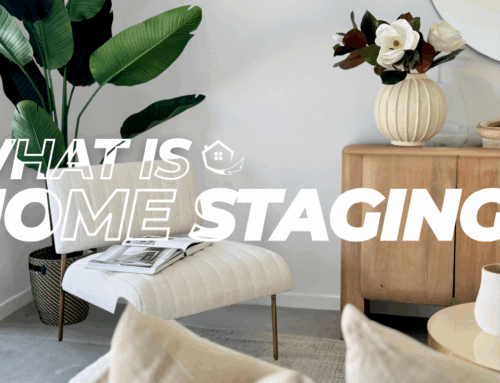When the Styling Doesn’t Land
What Happens Next Matters Most
Not every property stage goes to plan. Even with experience, creativity and the best intentions, it’s still possible to miss the mark – and when that happens, the response can make or break the relationship.
This is a real-world example of what can go wrong, what was done to make it right, and the takeaways for anyone working in or around property styling – and for sellers who want to understand what can happen behind the scenes.

A developer engaged us to style two newly completed homes. There was no fixed brief – just the freedom to create something appealing for their target buyer.
Two distinct looks were created:
- One with softer tones and a coastal-inspired palette
- The other with a more spacious layout and lighter styling choices
But once the walkthrough happened, it became clear the design direction wasn’t aligned with the client’s expectations.

The client had envisioned a more contemporary, monochrome feel. Their concern was that the softer styling blended too closely with the fixtures and finishes, particularly the timber kitchens which were meant to be a key feature.
There were also stylistic preferences – like a dislike for glass-top furniture – which hadn’t been communicated beforehand.

Rather than pushing back or explaining away the choices, the focus was on understanding what the client wanted and making practical changes:
- Furniture selections were revisited to create more contrast and better showcase the finishes.
- Glass was swapped for solid materials to lift the perceived value of the space.
- Layouts were adjusted to improve flow and allow for functional elements like TVs and dining tables – without compromising proportion or walkways.
- Any changes were made collaboratively, with full transparency and input from the client.
And importantly, the client wasn’t charged for this second round of work – because it was about getting it right, not just getting it done.

When it became clear that the original styling didn’t align with the client’s vision, the priority was to make it right – not to debate who was at fault. The decision was made to restyle both properties at no additional cost. It wasn’t about charging for time or protecting pride – it was about delivering on what was promised.
Is this how you handle all change requests?
A client will always feel heard – that’s the biggest thing. We’ll listen, have the conversation, and understand where they’re coming from. If it’s a small swap or layout tweak, we’ll usually just do it. But if the request involves more furniture or wasn’t discussed up front, we’ll talk it through transparently. Sometimes there’s a cost, sometimes there’s not – it depends on whether we’re adding to the original scope or simply correcting something that didn’t land.
Most of the time, we’ll meet people halfway. And when it’s clear the change will better suit the target market, we’ll often explain why we’ve done things a certain way – because styling isn’t just about taste, it’s about strategy. But ultimately, if we’re heading back out on site, we’ll usually make it look exactly how the client wants (within reason). It’s about collaboration, trust, and keeping the result aligned with the goal: a home that sells.

(An important reminder for us – and just as important for you)
- Clarify the brief, even when it feels flexible. Open-ended creative freedom is great, but understanding a client’s vision early can prevent big course corrections later.
- Listen without defensiveness. It’s not about who’s right – it’s about creating a result that works for the property, the market, and the seller’s goals.
- Prioritise functionality. Buyers need to visualise how they’ll use the space. That means balancing design choices with layout, proportion, and lifestyle cues.
- Relationships matter. Fixing the problem created long-term trust. And that trust leads to referrals, repeat work, and stronger business growth.
Property styling isn’t about always getting it perfect the first time – it’s about being adaptable, client-focused, and outcome-driven. If you’ve ever wondered what happens behind the scenes when things go wrong, this is the kind of work that turns challenges into opportunities.
Explore our latest FoxyTV episode…
…where we recently styled two townhouses side by side, using different looks to help each one stand out. But the result didn’t quite land with the client — a few styling choices didn’t hit the mark. Instead of sticking to what was installed, we listened, adapted, and restyled quickly. It became a real example of how flexibility and fast turnarounds can shift a campaign’s momentum. This story unpacks what went wrong, what we changed, and how being open to feedback can turn a near-miss into a win.







Facebook Comments